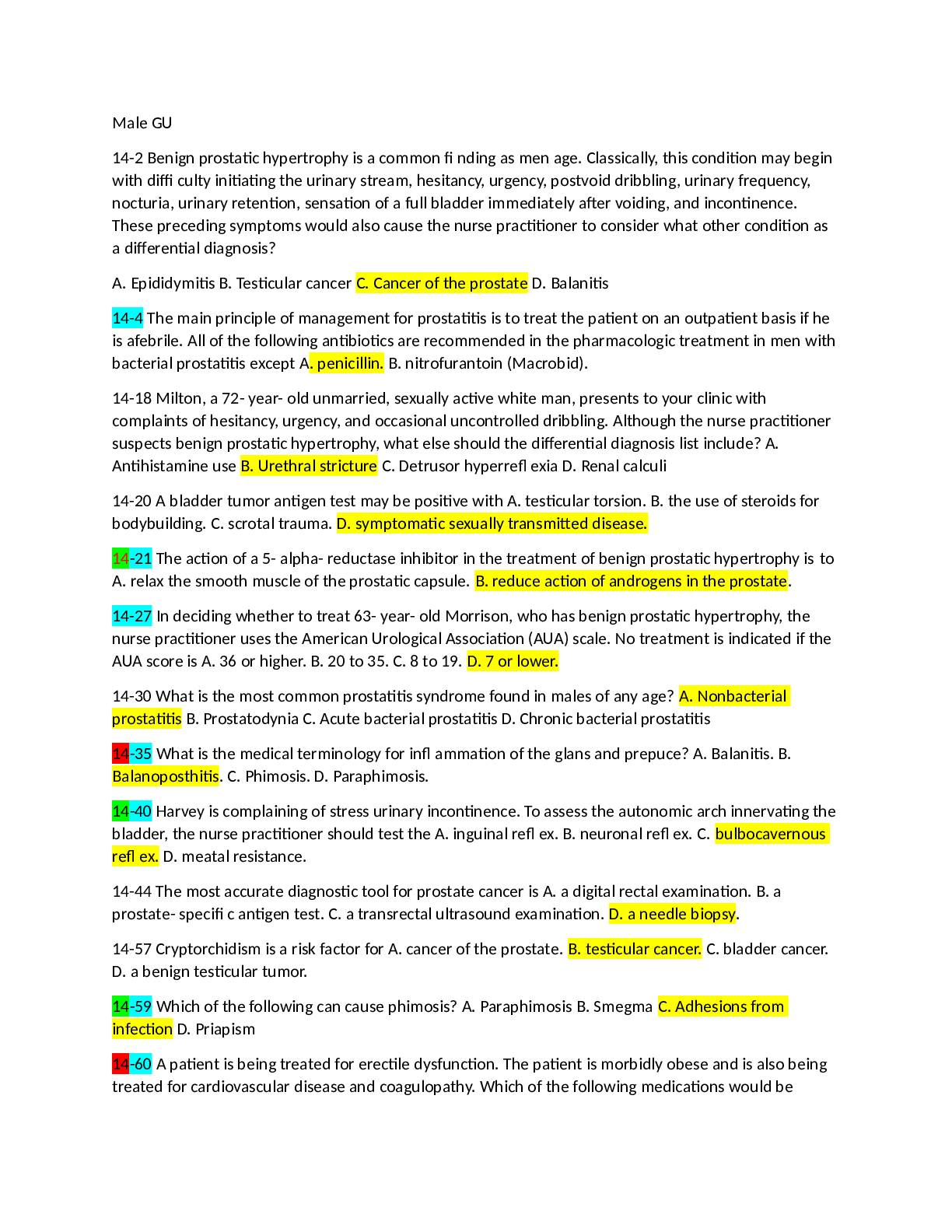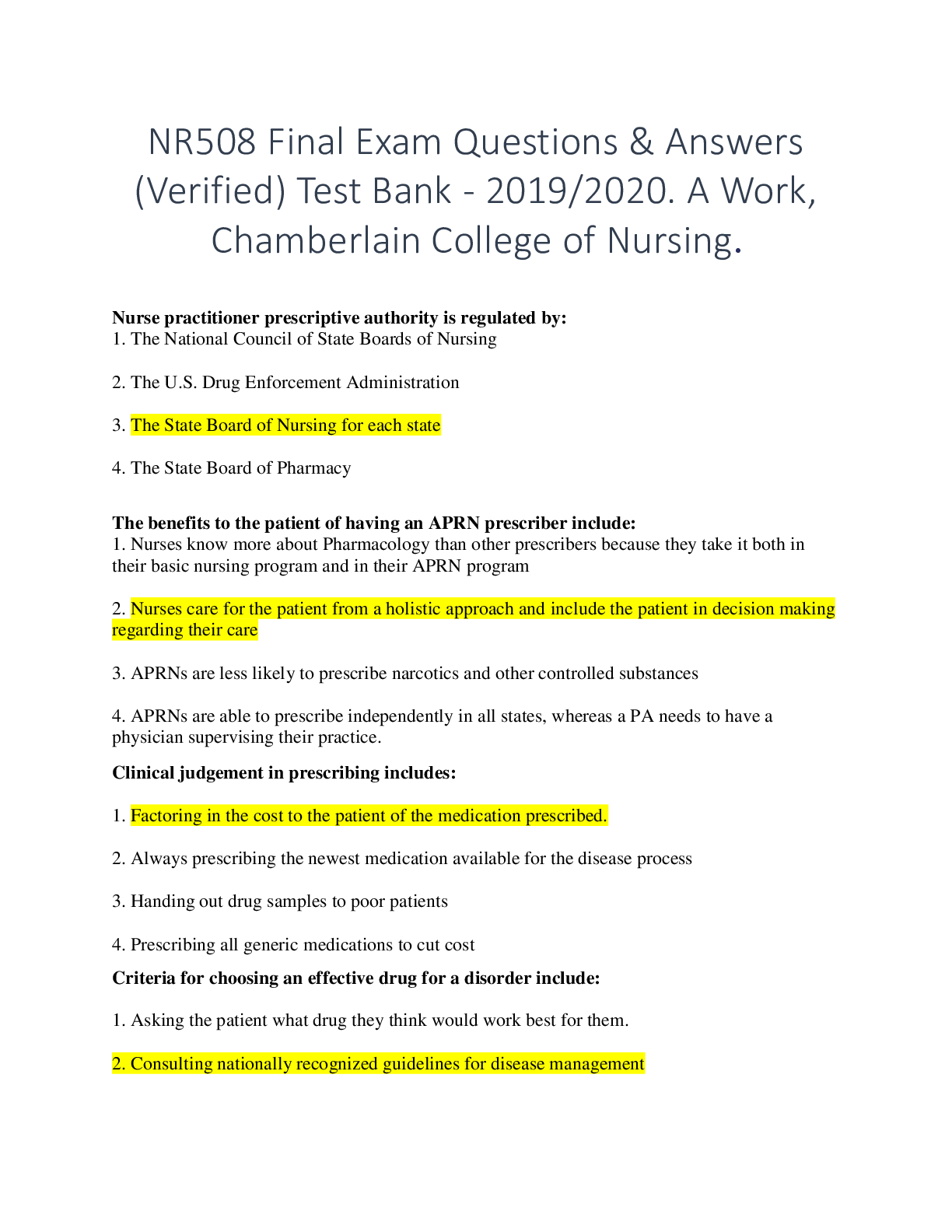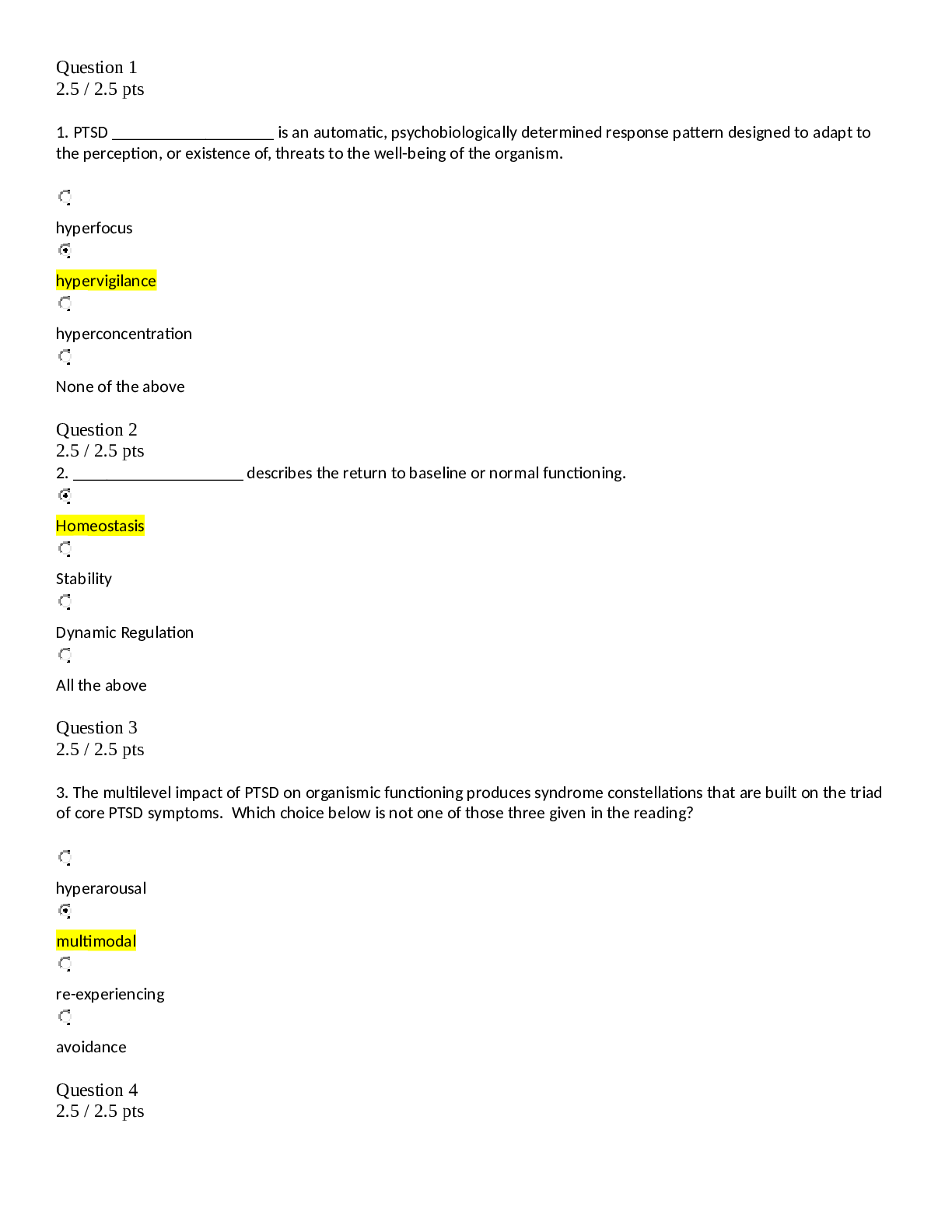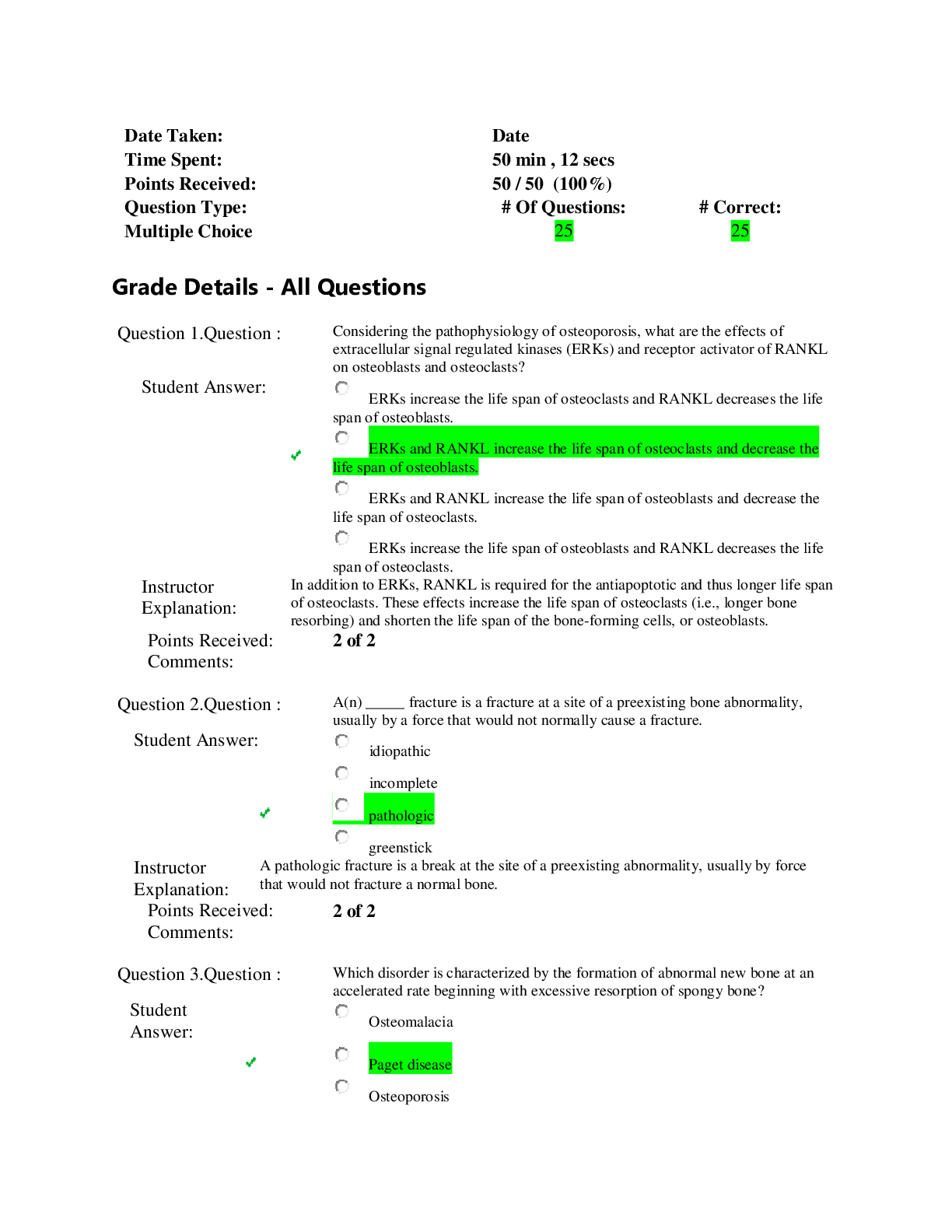Chamberlain College of Nursing - NR 511NR 511 final part 2. (A GUARANTEED)
Document Content and Description Below
Chamberlain College of Nursing - NR 511NR 511 final part 2. (A GUARANTEED) Male GU 14-2 Benign prostatic hypertrophy is a common fi nding as men age. Classically, this condition may begin with dif... fi culty initiating the urinary stream, hesitancy, urgency, postvoid dribbling, urinary frequency, nocturia, urinary retention, sensation of a full bladder immediately after voiding, and incontinence. These preceding symptoms would also cause the nurse practitioner to consider what other condition as a differential diagnosis? A. Epididymitis B. Testicular cancer C. Cancer of the prostate D. Balanitis 14-4 The main principle of management for prostatitis is to treat the patient on an outpatient basis if he is afebrile. All of the following antibiotics are recommended in the pharmacologic treatment in men with bacterial prostatitis except A. penicillin. B. nitrofurantoin (Macrobid). 14-18 Milton, a 72- year- old unmarried, sexually active white man, presents to your clinic with complaints of hesitancy, urgency, and occasional uncontrolled dribbling. Although the nurse practitioner suspects benign prostatic hypertrophy, what else should the differential diagnosis list include? A. Antihistamine use B. Urethral stricture C. Detrusor hyperrefl exia D. Renal calculi 14-20 A bladder tumor antigen test may be positive with A. testicular torsion. B. the use of steroids for bodybuilding. C. scrotal trauma. D. symptomatic sexually transmitted disease. 14-21 The action of a 5- alpha- reductase inhibitor in the treatment of benign prostatic hypertrophy is to A. relax the smooth muscle of the prostatic capsule. B. reduce action of androgens in the prostate. 14-27 In deciding whether to treat 63- year- old Morrison, who has benign prostatic hypertrophy, the nurse practitioner uses the American Urological Association (AUA) scale. No treatment is indicated if the AUA score is A. 36 or higher. B. 20 to 35. C. 8 to 19. D. 7 or lower. 14-30 What is the most common prostatitis syndrome found in males of any age? A. Nonbacterial prostatitis B. Prostatodynia C. Acute bacterial prostatitis D. Chronic bacterial prostatitis 14-35 What is the medical terminology for infl ammation of the glans and prepuce? A. Balanitis. B. Balanoposthitis. C. Phimosis. D. Paraphimosis. 14-40 Harvey is complaining of stress urinary incontinence. To assess the autonomic arch innervating the bladder, the nurse practitioner should test the A. inguinal refl ex. B. neuronal refl ex. C. bulbocavernous refl ex. D. meatal resistance. 14-44 The most accurate diagnostic tool for prostate cancer is A. a digital rectal examination. B. a prostate- specifi c antigen test. C. a transrectal ultrasound examination. D. a needle biopsy. 14-57 Cryptorchidism is a risk factor for A. cancer of the prostate. B. testicular cancer. C. bladder cancer. D. a benign testicular tumor. 14-59 Which of the following can cause phimosis? A. Paraphimosis B. Smegma C. Adhesions from infection D. Priapism 14-60 A patient is being treated for erectile dysfunction. The patient is morbidly obese and is also being treated for cardiovascular disease and coagulopathy. Which of the following medications would be contraindicated? A. Topical testosterone (Androgel) B. Sildenafi l (Viagra) C. Alprostadil (Caverjet) D. Subcutaneous pellet testost 14-61 A patient’s chief complaint is heaviness in the scrotum. The nurse practitioner assesses swelling of the testes, along with warm scrotal skin. What differential diagnosis is most probable? A. Cryptorchidism B. Orchitis C. Testicular torsion D. Epididymitis 14-65 Most lesions of the penis are nontender and painless. Which of the following conditions begins with a tender, painful lesion? A. Syphilitic chancre B. Genital herpes 14-70 Which of the following medications is known to cause nocturia? A. Sympathomimetic agents B. Phenothiazines C. Androgens D. Alpha- adrenergic agents 14-72 Harris, age 68, is complaining of crooked, painful erections. He has palpable, nontender, hard plaques just beneath the skin of his penis. Based on the chief complaint and assessment, what is the most likely differential diagnosis? A. Carcinoma of the penis B. Genital herpes C. Syphilitic chancre D. Peyronie’s disease 14-74 Morris, age 52, is in a new relationship and is not sure whether his erectile dysfunction is caused by stress about his performance or is organic. What simple test could you suggest to determine if he has the ability to have an erection? A. Nocturnal penile tumescence and rigidity test [Show More]
Last updated: 2 years ago
Preview 1 out of 13 pages

Buy this document to get the full access instantly
Instant Download Access after purchase
Buy NowInstant download
We Accept:

Reviews( 0 )
$10.00
Can't find what you want? Try our AI powered Search
Document information
Connected school, study & course
About the document
Uploaded On
Aug 01, 2021
Number of pages
13
Written in
Additional information
This document has been written for:
Uploaded
Aug 01, 2021
Downloads
0
Views
40
























